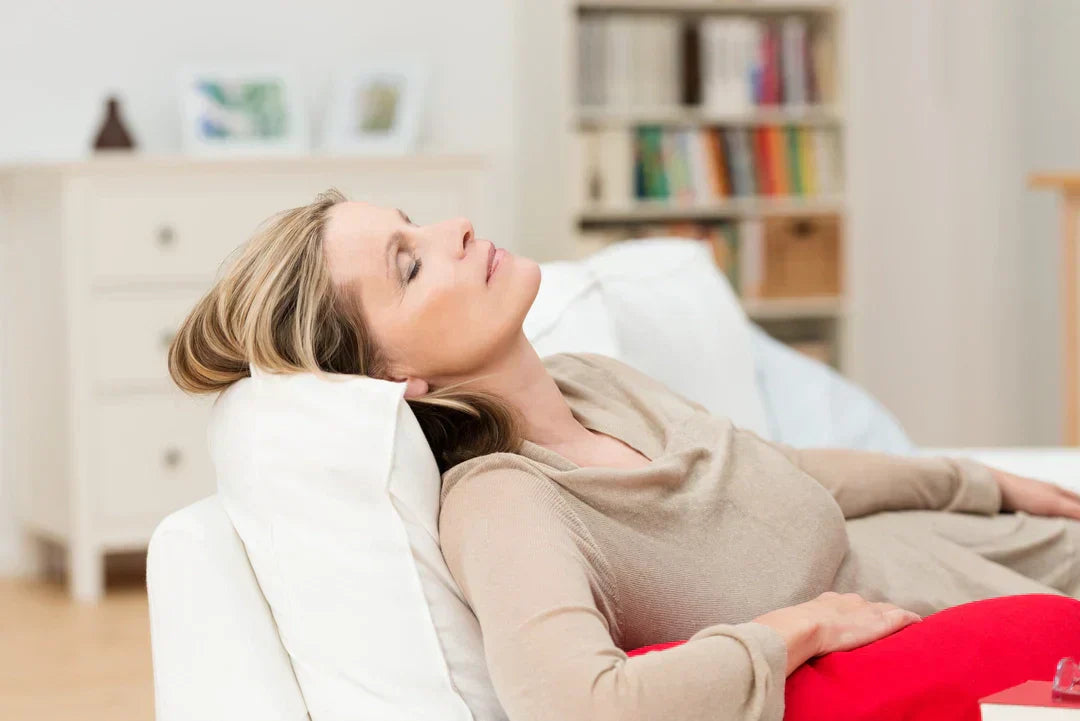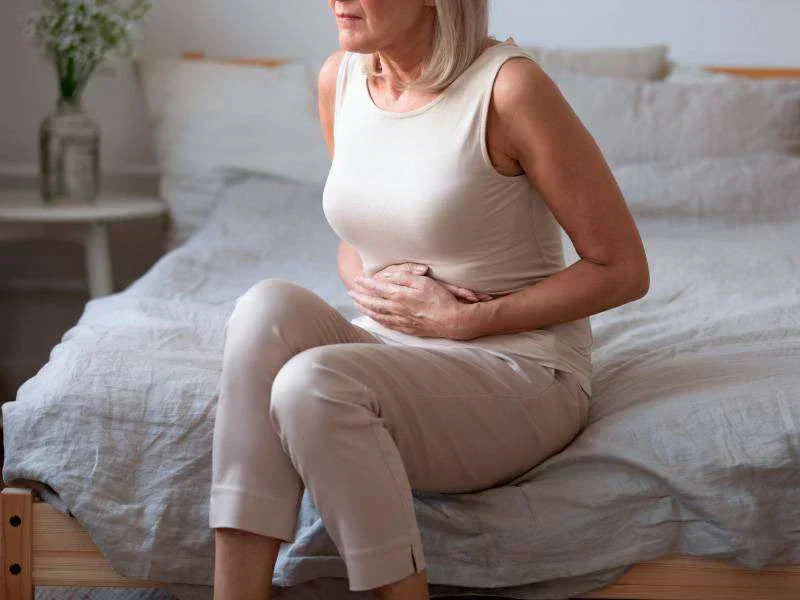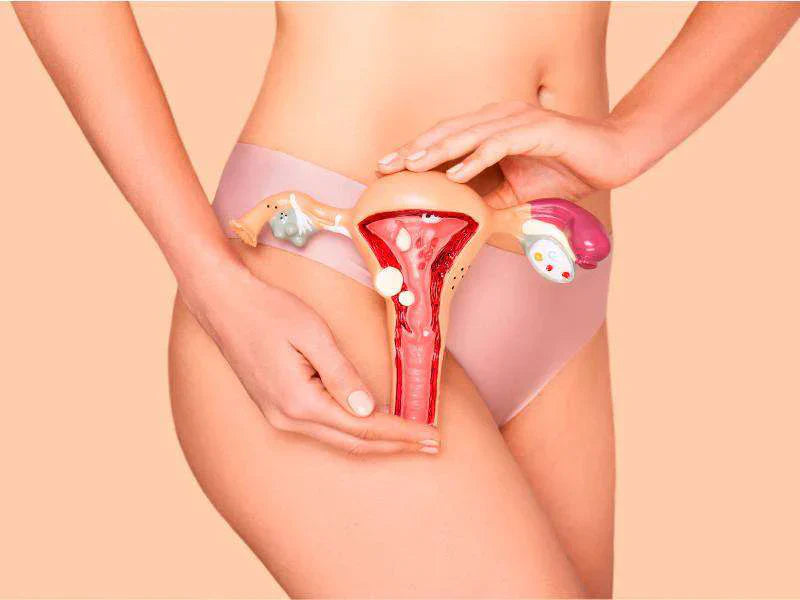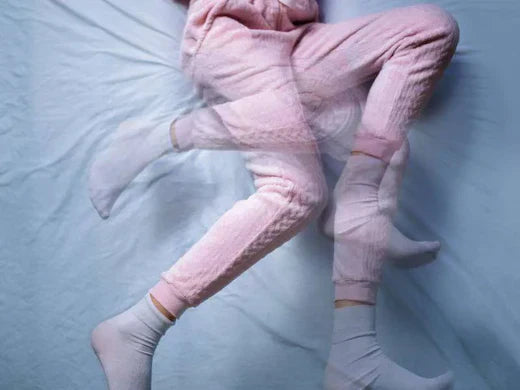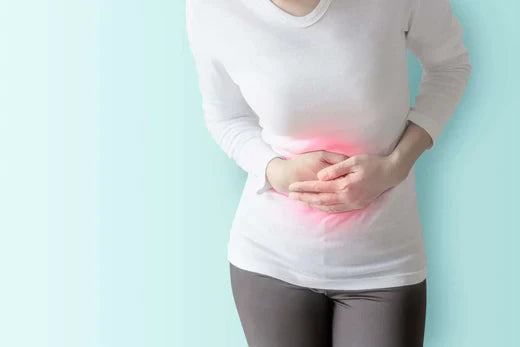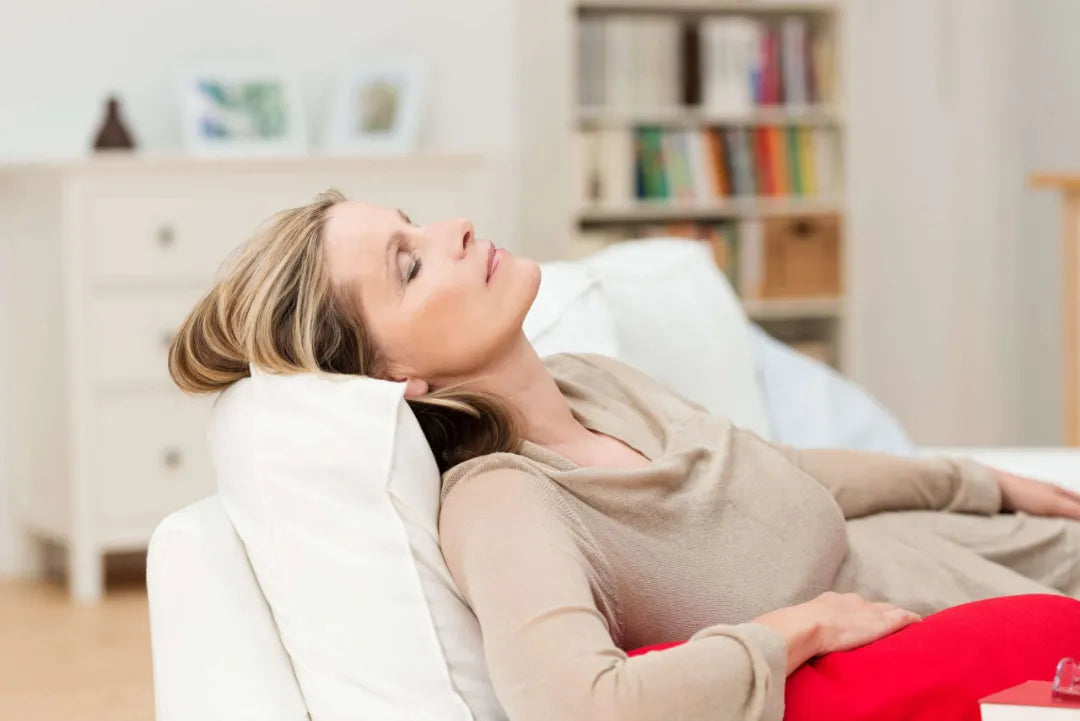During menopause, there could be complications. One of those is lack of energy which may happen for more than six months (Gluckman, 2022). This is known as chronic fatigue and, according to a study, it might affect up to 46% of women during menopause transition (Wang, 2021). These are some reasons for its appearance in this period:
-
During the menopause transition, a woman's body struggles with big changes such as hormonal alterations.
-
Those changes can develop emotional changes, stress, and ungrateful new experiences such as nocturia apparition (necessity of frequently peeing during the night), hot flushes, pains, and other discomforts that may be stressing, affecting sleep and rest time.
-
All the above complications cause physical and mental tiredness. When the body isn’t capable to confront it, these complications keep maintaining and increasing (Taylor-Swanson, 2018)
Due to its complexity, this syndrome might be a complicated discomfort to detect and treat. That’s why here we want to tell you everything about this.
Signs and symptoms of chronic fatigue

The chronic fatigue that you might experiment during menopause can be accompanied by some signs and symptoms such as (García, n.d; Mayo Clinic, 2020; Sapra, 2021):
-
Unrefreshing sleep. This may be influenced by sleep problems that are common in menopause. For example, restless legs syndrome.
-
Difficulty staying awake during the day.
-
Excessive tiredness after doing physical or mental activities.
-
Headache, sore throats, joints, or muscles without explanations.
-
Dizziness.
-
Problems to maintain concentration or memory loss.
-
Excessive sweating.
Furthermore, of the above symptoms, it could be associated with some of the own discomforts of menopause transition (Taylor-Swanson, 2018).
How can you treat chronic fatigue?
Although the tiredness itself can be treated with some measures and lifestyle changes, it is recommended to leave its diagnosis and treatment (especially with medications) in the hands of health professionals. Here below, we explain a bit further about it:
Pharmacological effects
This treatment is based on the own hormonal alteration correction that can affect sleep or cause tiredness (Brennan, 2021). To reach it, the physician can prescribe a variety of medications for specific treatments (Sapra, 2021):
-
Antidepressants and minor tranquilizers help to relieve anxiety symptoms. For example, amitriptyline or sertraline.
-
Anti-inflammatories without steroids for pain management.
-
Anti-viral therapy.
-
Medicaments of steroid type such as hydrocortisone.
-
Complementary treatments like B12 consumption and antioxidants.
Remember that the indication of these or any other medicament must be done by a professional.
Non-pharmacological actions
The fatigue (for any causes) treatment anchor is based on some habits and lifestyle changes that aim to promote rest. For example (Mayo Clinic, 2020; Sapra, 2021):
-
Have good sleep hygiene. Here are included some measures whose objective is to enhance the quantity and quality of sleep.
-
Seek emotional advice and support to face the experimented emotional or stress changes.
-
Make physical activity. This must be with tolerance because its intensity will be gradually increased.
-
Participate in cognitive-conceptual therapies. These seek to create conduct strategies to change tiredness sensation impact.
-
Learn to equilibrate rest and work periods.
-
Make changes to your alimentation. The consumption of some foods like soy, for example, contributes to estrogens production. Furthermore, avoiding spicy food can help to prevent the hot flushes and the stress that they generate (Brennan, 2021).
Although it is difficult to avoid chronic fatigue, it is possible to prevent it from taking some of these actions. Also, that helps to avoid some complications of daily life such as (Mayo Clinic, 2020):
-
Depression.
-
Increasing job absences.
-
Lifestyle limitations.
-
Social isolation.
Now that you know what chronic fatigue is, why it occurs during menopause, its signs, and symptoms, you could apply these recommendations to prevent or to face this disease and make better your life. But, as always, you must search for a health professional’s help to have a timely diagnosis and medication indication if it is necessary.
Bibliographical references
Brennan, D. (2021). What to Know About Menopause Fatigue. WebMD. https://www.webmd.com/healthy-aging/what-to-know-about-menopause-fatigue
García, I. (n.d.). Menopausia y sueño. Instituto de la Menopausia. https://www.institutodelamenopausia.com/divulgacion/sintomas/menopausia-y-sueno
Gluckman, S. (2022). Síndrome de fatiga crónica. Manual MSD. https://www.msdmanuals.com/es/professional/temas-especiales/s%C3%ADndrome-de-fatiga-cr%C3%B3nica/s%C3%ADndrome-de-fatiga-cr%C3%B3nic
Mayo Clinic. (2020). Chronic fatigue syndrome. https://www.mayoclinic.org/diseases-conditions/chronic-fatigue-syndrome/symptoms-causes/syc-20360490
MedlinePlus. (2021). Chronic Fatigue Syndrome. https://medlineplus.gov/chronicfatiguesyndrome.html
Sapra, A., & Bhandari, P. (2021). Chronic Fatigue Syndrome. Treasure Island (FL): StatPearls Publishing. https://www.ncbi.nlm.nih.gov/books/NBK557676/
Taylor-Swanson, L., Wong, A.E., Pincus, D., Butner, J.E., Hahn-Holbrook, J., Koithan, M., Wann, K., & Woods, N.F. (2018). The dynamics of stress and fatigue across menopause: attractors, coupling, and resilience. Menopause, 25(4), 380–390. https://doi.org/10.1097/GME.0000000000001025
Wang, X., Wang, L., Di, J., Zhang, X., & Zhao, G. (2021). Prevalence and risk factors for menopausal symptoms in middle-aged Chinese women: a community-based cross-sectional study. Menopause, 28(11), 1271–1278. https://doi.org/10.1097/GME.0000000000001850
You May Also Like

JOIN US AND GET 10% OFF
Sign up to our newsletter to access free resources, advice and support.



